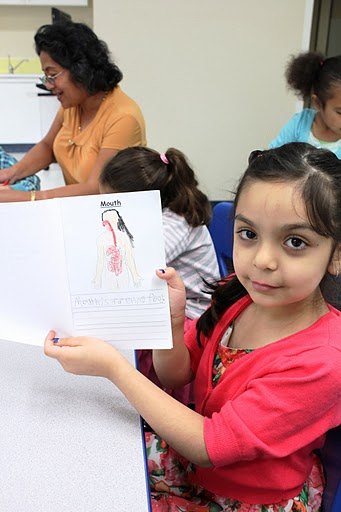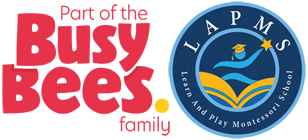 Bay Area parents, today, from Danville to Dublin, San Ramon to Blackhawk, Fremont to Walnut Creek and everywhere in between want the best for their kids. Many come to us looking, first, for the best kindergarten in Danville, or a private kindergarten in San Ramon, and then discover the Montessori method. Others already know that they want a Montessori Kindergarten, and then look for one that is both highly rated and convenient to their home in Diablo, Blackhawk or San Ramon. Use this page to learn about our Montessori Kindergarten curriculum.
Bay Area parents, today, from Danville to Dublin, San Ramon to Blackhawk, Fremont to Walnut Creek and everywhere in between want the best for their kids. Many come to us looking, first, for the best kindergarten in Danville, or a private kindergarten in San Ramon, and then discover the Montessori method. Others already know that they want a Montessori Kindergarten, and then look for one that is both highly rated and convenient to their home in Diablo, Blackhawk or San Ramon. Use this page to learn about our Montessori Kindergarten curriculum.
The Kindergarten curriculum closely follows the principles of Montessori education. Our holistic approach to education is evident as we support the opportunities for development socially, physically, intellectually and emotionally for each child. Children are able to move on when ready for a new challenge. Therefore, lessons are presented in small groups to the children and through observation, the teacher determines when the child has internalized a concept and is ready for a new concept.The Kindergarten year highlights critical thinking, independence, comprehension, and preparedness for elementary.
In summary, we’re proud to be known as not only one of the best kindergarten programs in our home cities of Danville, Fremont, and Dublin but as one of the best Montessori Kindergarten programs not only in those cities but in nearby towns such as Blackhawk, Alamo, or even San Ramon. If you’re interested in exploring Montessori Kindergarten for your child and you live nearby to Danville, Fremont, or Dublin (or it’s on your busy commute from Walnut Creek or Blackhawk), reach out to us today for a complementary school tour. We’re happy to meet you as a parent and showcase not only our beautiful Montessori Kindergarten facilities but our world-class teachers and pupils!
The language curriculum progresses from oral language activities and pre-reading work to writing and eventually to reading comprehension. Language studies include the development of listening skills, comprehension and vocabulary as well as the ability to express oneself with confidence. The materials for written language introduce the child to the letters of the alphabet and their sounds. The child then goes on to compose words and sentences using the moveable alphabet. All aspects of language development are occurring instantaneously and it is the teacher’s role to observe readiness for each new lesson. Language studies include:
Oral Preparation:
- Conversational speech
- Student Presentations
- Speaking in front of peers
- Storytelling
- Vocabulary enrichment
- Listening skills and comprehension
Literature:
- Listening Skills
- Creative Stories
- Reading Fiction, Non-fiction, and Poetry
Writing:
- Spelling
- Capitalization
- Punctuation
- Handwriting
- Manuscript
- Introduction to cursive
Reading:
- Phonics
- Blends
- Sight Words
- Phonogram sounds
- Reading in context
- Vocabulary of objects, attributes, and actions
- Word building skills
- Introduction of noun identification
- Introduction of verb identification
- Compound words
- Plurals
Children go from a concrete understanding of mathematics to an abstract understanding of mathematics through various mathematical concepts. Through activities that incorporate the use of concrete materials children learn to count and then systematically progress to solving complex addition, subtraction, multiplication and division equations. Children will learn number recognition, sequencing place value, and the exchange of quantities. Math studies include:
Concrete materials to explore place value:
- Units
- Tens
- Hundreds
- Thousands
Concrete materials to perform operations:
- Addition
- Subtraction
- Multiplication
- Division
- Written numerals 1-1000
- Skip counting
- Fractions
- Measurement
- Money
- Time
Geometric plane figures:
- Circles
- Squares and rectangles
- Triangle
- Quadrilaterals
- Polygons
- Curved figures
- Study of geometric solids
The Practical Life Curriculum increases a child’s concentration, coordination, fine and gross motor skills, sense of order, building the process of finishing an assignment. These experiences lead to the development of independence and foster relationships with others.The activities build a child’s concentration as well as prepare the child for writing and language.
Respect and care of environment
- Indoor and outdoor
- Recycling
Grace, courtesy, and etiquette
- Caring about others
- Problem solving
- Conflict resolution
Independence
- Care of person
- Health and safety
- Nutrition and food preparation
Community Service
- Developing an awareness of needs of others
- Participating in several service projects throughout the school year
Sensorial materials are used to develop the child’s five senses. They allow the children the opportunity to sort things by size, shape, color, touch, sound, temperature, and weight. For example they can grade materials from dark to light and from large to small. The materials are self- correcting, promoting independence in the child’s work. Montessori sensorial apparatus teaches children to classify their sensorial impressions in an organized, orderly, and scientific manner through:
Auditory learning
- Different Sounds
Visual learning
- Color
- Size
- Shape
- Gradation
- Identification
- Comparison
Tactile learning
- Texture
- Weight
- Temperature
Our students are encouraged to explore the many art materials available at all times in the classroom: tempera paints, watercolors, pencils, crayons, chalk, found materials from walks in the park. Our students learn other art forms as well, such as weaving, collage, and papier-mâché. They study the work of various artists and different elements of art such as shape, color, and texture.
The Science materials present certain aspects of this world, in such a way that the child can observe, experiment, demonstrate, and record what they learn. Science is hands-on activities that include Life Science, Earth Science,and Physical Science. In science the children’s natural curiosity is inspired through discovery projects and experiments, helping the children draw their own conclusions. The plant and animal kingdoms are studied in an orderly fashion to foster a love and appreciation for all living things. Science studies and materials enable the child to observe, explore and perform experiments in all or more areas of:
Zoology:
- Vertebrate and invertebrate classification, characteristics, and internal/external parts
- Animal kingdom
Botany:
- Parts of plant – advanced
- Experiments
- Botany charts
- Plant kingdom
- Vegetable and flower gardening
Anatomy:
- Parts of the body
- Systems of the body
Physical Science:
- Experiments relative to the formation of the universe and earth
- State of matter
- Gravity
- Temperature
- Density
- Chemical reactions
- Properties of water
- Magnetism
Earth Science:
- Water properties
- Weather/seasons
- Oceans
- Rocks
Scientific Reasoning and Technology
- Observation skills
- Science Experiments
The Spanish curriculum uses a combination of speaking, singing, listening, and writing activities. Learning a foreign language is an enjoyable experience for our children. Children acquire:
Vocabulary
- Numbers
- Colors
- Calendar (days, months, seasons)
- Animals
- Parts of the body
- Spanish songs
- Questions and answers in Spanish
The classroom integrates cultural studies through literature, activities, and materials. The goal is acquiring an understanding of the world’s other cultures and what they offer. This includes studies of the world and other cultures through photographs, molds, globes, flags and puzzles. Montessori children achieve early understanding of the concepts of:
- Globe as Earth’s shape
- Continents/countries
- U.S. states
- Flag study
- State research
- Land and water forms
- Map-making skills
- Oceans
- Festivals around the world
Whether it is sung, played, or danced to, music streams through our curriculum.The music curriculum also offers significant opportunities to build stage confidence through our numerous performances throughout the school year such as the Winter, Spring, and International Concerts.
The program, at each level, is responsive to the needs and interests of the children, and the ultimate goal is the joyful discovery of movement and its benefits, both physical and psychological. The children explore their imagination, spatial awareness, musicality and rhythm, movement quality, energy, as well as are a great source of physical activity. Children develop skills in:
- Understanding different loco motor movements: running, hopping, leaping, skipping, jumping
- Continuing development of gross motor skills
- Increasing strength, coordination, and flexibility
- Building confidence working in groups and as an individual




